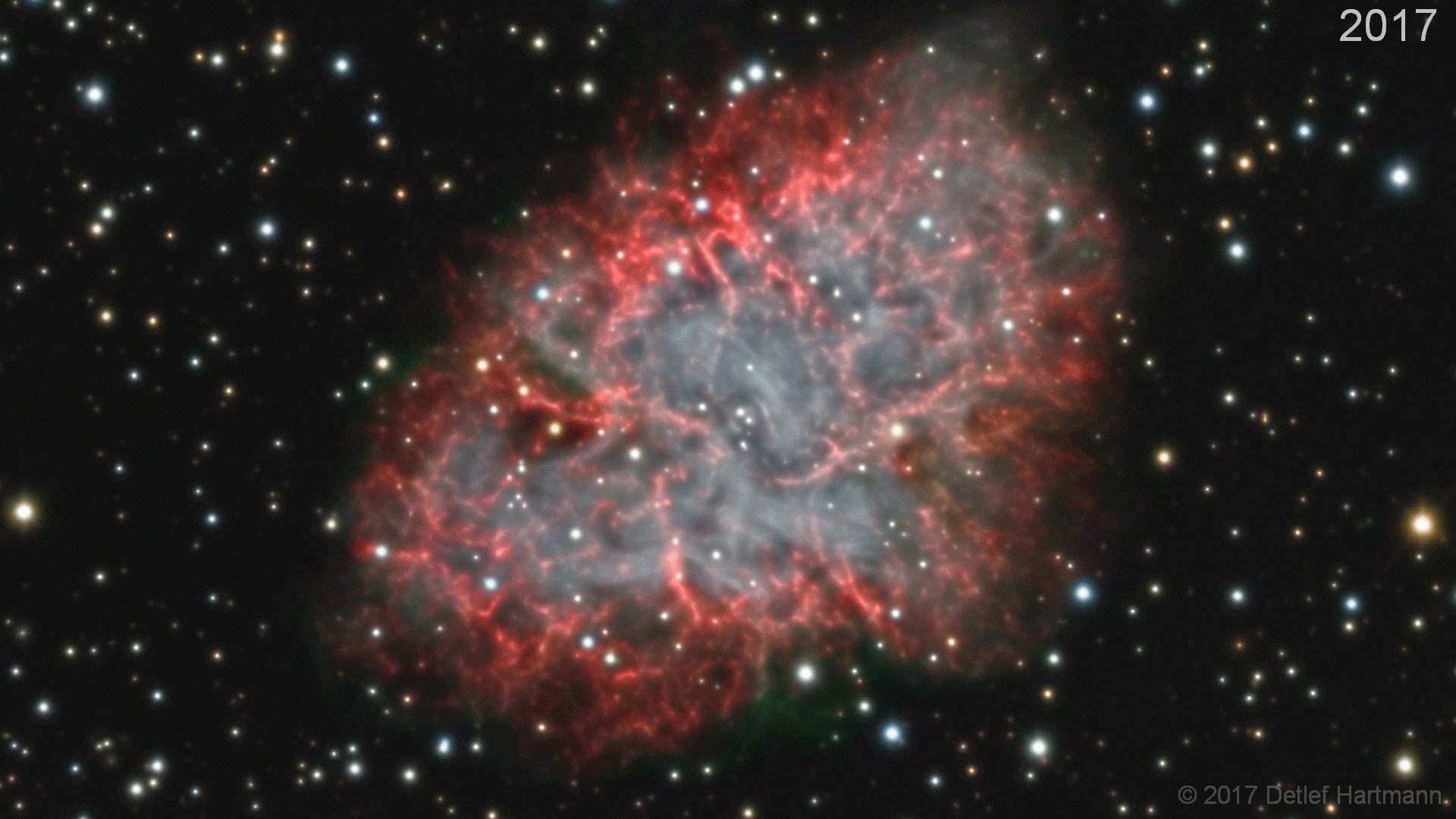Create a free profile to get unlimited access to exclusive videos, sweepstakes, and more!
Watch debris from a supernova explosion expand before your eyes!

One of the most singularly violent events our Universe has to offer is a supernova.
There are, overall, two ways to make them. One involves a white dwarf eating material from a neighbor until it pops. The other is the collapse of the core of a massive star, triggering a blast wave that rips through the outer layers and launches them into space.
Both release titanic amounts of energy, shining literally billions of times brighter than the Sun for weeks. They also propel a vast quantity of matter away from the event at incredible speeds; several times the mass of the Sun can be blasted out at tens of thousands of kilometers per second!
It is almost impossible to overstate just how ridiculously over-the-top such an explosion is.
The funny thing is, supernovae tend to be far away. They're so distant that the vastness of space shrinks that phenomenally speedy motion down to an apparent slow crawl. Sure, a blob of supernova-ejected material can cross our entire solar system in a couple of weeks, but when the supernova is 6,500 light-years away that motion can be difficult to detect.
Unless you have good equipment, patience, and a plan. Happily, astronomer Detlef Hartmann has all three (in fact I wrote about his work imaging the same part of the sky as the Hubble Deep Field, where he did an astonishing job). In 2008, using a home-built 0.44 meter (17") telescope and a digital camera, he started observing the Crab Nebula, one of the most famous supernova debris clouds. It's 6,500 or so light-years away, and is the glowing, expanding debris from a massive star that went kablooie at the end of its life. The light first reached here in July 1054, and astronomers have been fascinated by it ever since.
Because it's close, and relatively young, it's possible to actually see the debris from the explosion physically expanding over time. Hartmann has repeated his observations of the Crab every year since 2008 using the same equipment and methods, and after the 2017 observations he created an animation showing this motion. It's nothing short of jaw-dropping:
The video repeats a few times, and the year is indicated in the upper right corner. With each frame you can see the filaments and clouds expanding, moving away from the center. In fact, the center of the explosion isn't too hard to find: Watch the expansion and trace it back to the center; there are two stars close to each other there. The one to the upper left is a background (or maybe foreground) star, but the one to the lower right is a pulsar, a kind of neutron star, the über-condensed collapsed remnant of the star that exploded.
Pulsars produce a lot of energy, generated by their rapid spin and phenomenally strong magnetic fields. The field sweeps around and scoops up subatomic particles that spin around the magnetic field lines, generating what's called synchrotron radiation. This energy moves out into the nebula and supplies the gas with enough oomph to glow brightly (you can even see this as a wind from the pulsar, an expanding ring around it in the animation). It also helps accelerate the gas outward; without it, the nebula's expansion would be slower.
In fact, you can use the expansion rate of the nebula (together with its measured velocity) to calculate when the explosion took place. A few years back I took an old exercise for students and updated it so that they could measure the nebula at two different points in time and calculate its age. It would be cool if these images could be used too.
I'm overwhelmed a bit by this animation, for two reasons. One is that even after all this time, I'm not used to seeing things move and change in space. Sure, the Moon moves in the sky, and the planets around the Sun, but deep sky objects — stars, nebulae, galaxies — are so distant that any physical motion at all is incredibly difficult to detect. They may as well be frozen in time. Being able to see it … that's astonishing.
And the other reason I'm overwhelmed? This kind of work being done by "amateur" astronomers! To make these observations Hartmann used telescope he built himself. The total exposure was about 32 hours (so a bit over three hours per frame), with a total of 386 images going into the final product. That's a monumental amount of work, but the results look like they could be used for scientific analysis. Incredible.
It's amazing how far astronomy has come since I started in it as a wee lad. I suppose like the Crab, it's expanded rapidly. And I love seeing the energy of others going into that expansion.


























